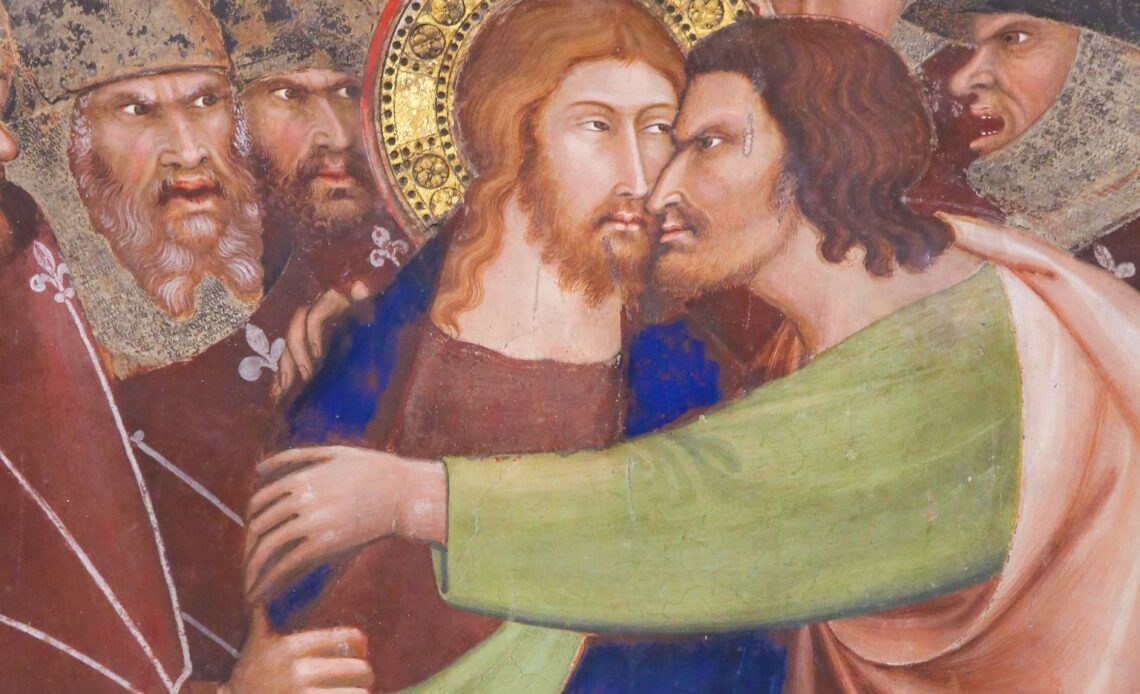Depending on your personal church history, the concept of Holy Week may be either familiar to you or confusing for you. Historically speaking, the observance of Holy Week dates back to the fourth century. While Palm Sunday, Good Friday, and Easter had been celebrated a century earlier, Saint Athanasius and Saint Epiphanius instituted observances that would take place during each day of the week between Palm Sunday and Resurrection Sunday.
Even if you have history in a church that observed Holy Week, Spy Wednesday may still be a difficult concept to understand. With that in mind, we’re going to look at the history and the story of Spy Wednesday, which is also referred to as Holy Wednesday.
Historically, this is considered the day that Judas struck his deal with the Sanhedrin to betray Christ for 30 pieces of silver. Today, we’re going to look more at this story, what led up to it, and how it played such a pivotal role in the first Easter.
The Scheme to Kill Christ
Matthew 26:1-5 (NIV)
When Jesus had finished saying all these things, he said to his disciples, “As you know, the Passover is two days away-and the Son of Man will be handed over to be crucified.” Then the chief priests and the elders of the people assembled in the palace of the high priest, whose name was Caiaphas, and they schemed to arrest Jesus secretly and kill him. “But not during the festival,” they said, “or there may be a riot among the people.”
The plot to kill Jesus started long before Judas made a deal with the religious leaders. The leaders of the day knew that there would be a riot if they publicly arrested Jesus, so they had to put together a plan that would allow them to do something behind the scenes.
Jesus had been in town since Palm Sunday, as He had brought the disciples to Jerusalem to observe Passover and the week-long festival that led up to it. We know that Jesus had worked miracles during that week. After He threw the moneychangers out of the temple and flipped over their tables, He was moved with compassion and healed the sick who were present. With that in mind, the religious leaders who were convening in the palace of the high priest, Caiaphas, tried to formulate a plan that would allow them to arrest and murder Christ secretly.
Meanwhile, in Bethany, Jesus was at the house of a man named Simon who had dealt with leprosy. Many Biblical historians agree that Christ had healed Simon of his leprosy at some point during his three-year ministry travels.
Jesus Anointed at Bethany
John 12:2-3 (NIV)
Here a dinner was given in Jesus’ honor. Martha served, while Lazarus was among those reclining at the table with him. Then Mary took about a pint of pure nard, an expensive perfume; she poured it on Jesus’ feet and wiped his feet with her hair. And the house was filled with the fragrance of the perfume.
The story of Judas betraying Christ doesn’t begin on the Wednesday of Holy Week. The first verse in John 12 tells us that Jesus went to Bethany six days before Passover, meaning that this part of the story took place on Holy Monday after Christ had restored order in the temple.
Jesus was very popular in Bethany. Remember, Bethany was the place where Lazarus, Mary, and Martha lived in the story told in John 11. While we don’t know how much time passed between those two stories, we do know that this dinner was being thrown in Jesus’ honor. On the surface, it doesn’t look like this part of the story has anything to do with Judas. In fact, if you read this story in the other Gospels, Judas’ name doesn’t even come up. John is the only Gospel writer who includes a part of the story that is very telling.
John 12:4-6 (NIV)
But one of his disciples, Judas Iscariot, who was later to betray him, objected, “Why wasn’t this perfume sold and the money given to the poor? It was worth a year’s wages.” He did not say this because he cared about the poor but because he was a thief; as keeper of the money bag, he used to help himself to what was put into it.
Judas verbalized his objection to the “waste” of the perfume, but not because he actually cared about the poor. Instead, Judas was obsessed with money. In fact, he was so obsessed with money that he used to steal out of the money bag that belonged to Jesus and the disciples.
That sets the stage for the betrayal to come.
Matthew 26:14-16 (NIV)
Then one of the Twelve-the one called Judas Iscariot-went to the chief priests and asked, “What are you willing to give me if I deliver him over to you?” So they counted out for him thirty pieces of silver. From then on Judas watched for an opportunity to hand him over.
Matthew’s Gospel tells us that this conversation took place right after the anointing of Christ’s feet. Judas, pretending to be outraged by the waste of the same money that he would have likely stolen. When he couldn’t get his hands on that money, he went to the chief priests and asked them how much they would pay him for Jesus. The price they agreed upon, 30 pieces of silver, was the price of a common slave in the New Testament.
After that conversation, Judas spent every moment of every day looking for an opportunity to betray Jesus. He found his opportunity after the disciples had enjoyed the Last Supper with Jesus.
Matthew 26:47-49 (NIV)
While he was still speaking, Judas, one of the Twelve, arrived. With him was a large crowd armed with swords and clubs, sent from the chief priests and the elders of the people. Now the betrayer had arranged a signal with them: “The one I kiss is the man; arrest him.” Going at once to Jesus, Judas said, “Greetings, Rabbi!” and kissed him.
And with that, Judas had held up his end of the bargain. When Jesus took the disciples into the Garden of Gethsemane, Judas slipped away after Jesus had revealed that He knew about the plot. He returned with a band of soldiers, gave them the sign, and Christ was arrested.
Judas’ story had a tragic ending, as all four Gospel accounts discuss how his regret drove him to take his own life. However, are some things that we can learn about Judas, his role as a disciple, and how his story ended.
First of all, Jesus knew about Judas’ theft, but He chose to keep him involved in the ministry. Why? Because Judas’ betrayal of Christ was prophesied in the Old Testament. God’s purposes will be carried out. Additionally, He wants us to be a part of things, even when we are struggling to get it right. Christ allowed Himself to be betrayed by someone who He considered a friend because He was fully committed to the purpose that God had for His life.
Secondly, on the night of the Last Supper, Jesus still had dinner with Judas. Moreover, Jesus, knowing fully what Judas was going to do to Him humbled Himself and washed Jesus’ feet. He loved Judas while knowing what Judas was doing. That’s the kind of love that our Savior has.
A Closing Prayer:
Heavenly Father, on this Holy Wednesday, I want to thank You for being completely committed to the Father’s plan for my salvation. Thank You for loving me relentlessly and unconditionally, even when I don’t get it right. In Christ’s name, Amen.


